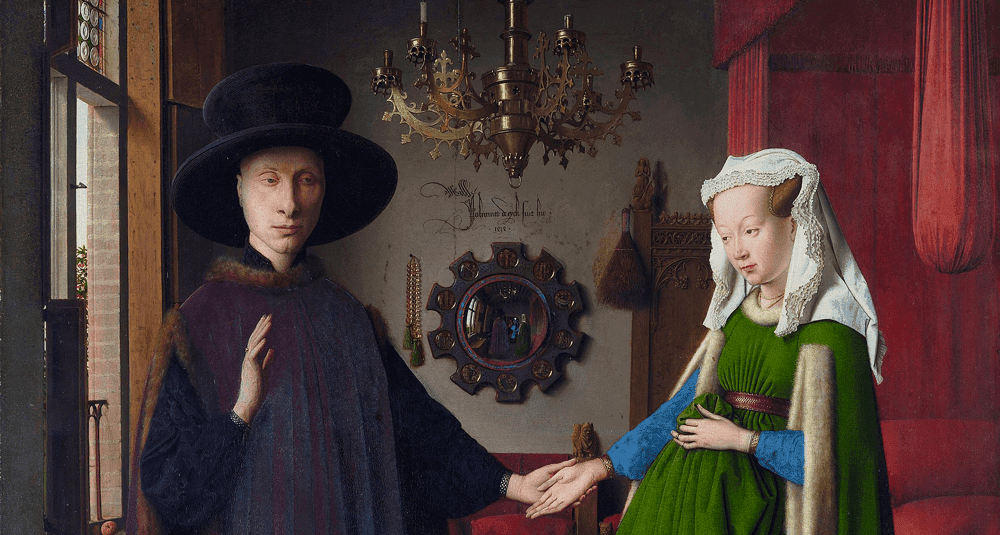What primitive Flemish painter produced the Arnolfini Portrait in 1434?
Last Updated:
The famous painting The Arnolfini Portrait was painted in 1434 by Jan van Eyck, one of the most brilliant artists of the 15th century and an emblematic figure of the Flemish Primitives. This work, now in the National Gallery in London, is not only an artistic masterpiece, but also an inexhaustible source of historical, social and symbolic interpretation.
Jan van Eyck was born in Bruges around 1390 and died in 1441. He was one of the pioneers of oil painting, which he helped to perfect. Thanks to this technique, he achieved a level of precision and detail unrivalled in his day. He excelled in rendering textures, light and depth effects, giving his works a remarkable visual richness.
Van Eyck worked at the court of Philip the Good, Duke of Burgundy, which provided him with a stimulating artistic and intellectual environment. His style combines technical mastery with profound symbolic sensitivity, making him one of the greatest painters of Northern Europe before the arrival of the Italian Renaissance.
The painting Arnolfini Portrait depicts a man and a woman in a richly decorated room. The man is probably Giovanni di Nicolao Arnolfini, an Italian merchant based in Bruges, and the woman his wife. The two stand side by side, solemnly holding hands in a carefully detailed bourgeois interior.
What fascinates historians and art lovers alike is the incredible amount of symbolism hidden in this seemingly simple scene:
- The convex mirror in the background reflects two other figures, possibly Jan van Eyck himself, adding an illusionist dimension unheard of at the time;
- The dog in the center symbolizes fidelity;
- The fruit in the window may evoke fertility or temptation;
- The chandelier features a single lit candle, probably a divine symbol;
- The attitude of the figures and certain objects has led some to see in this work a wedding ceremony, or at least a representation of a marriage contract.
Van Eyck even added his signature above the mirror, in Latin calligraphy, Johannes de Eyck fuit hic (Jan van Eyck was here), as if he had witnessed the scene.
This painting marks a turning point in the history of Western painting. It combines meticulous realism and complex symbolism, while introducing a psychological perspective on the characters, a rarity for the time. Van Eyck’s masterful use of oil paint enables him to create unprecedented effects of light and texture, the silk of the clothes, the reflections of the mirror, the wood of the furniture, everything is rendered with impressive attention to detail.
What’s more, this painting is one of the first to fully integrate the viewer into the scene, through the interplay of mirrors and signature, as if the artist and ourselves were invited to witness a moment of intimacy.
The Arnolfini Portrait were painted in 1434 by Jan van Eyck, a Flemish primitive painter of genius. A masterpiece of Flemish art, this work brilliantly combines technical realism, religious and domestic symbolism and artistic innovation. At once a social document, a pictorial statement and a reflection on the role of the artist, it remains one of the most admired, studied and fascinating paintings in the history of Western art.
arts

What primitive Flemish painter produced the Arnolfini Portrait in 1434?
Answer
The Arnolfini Portrait, painted in 1434, is the work of primitive Flemish painter Jan van Eyck, a master of oil painting.